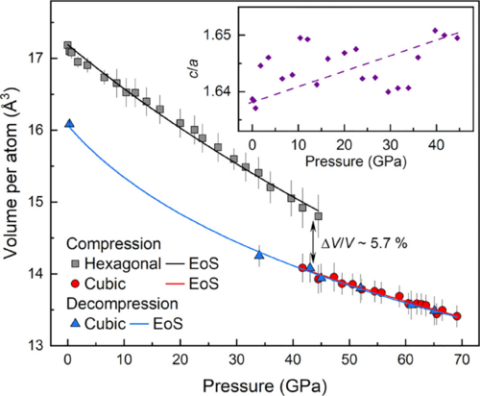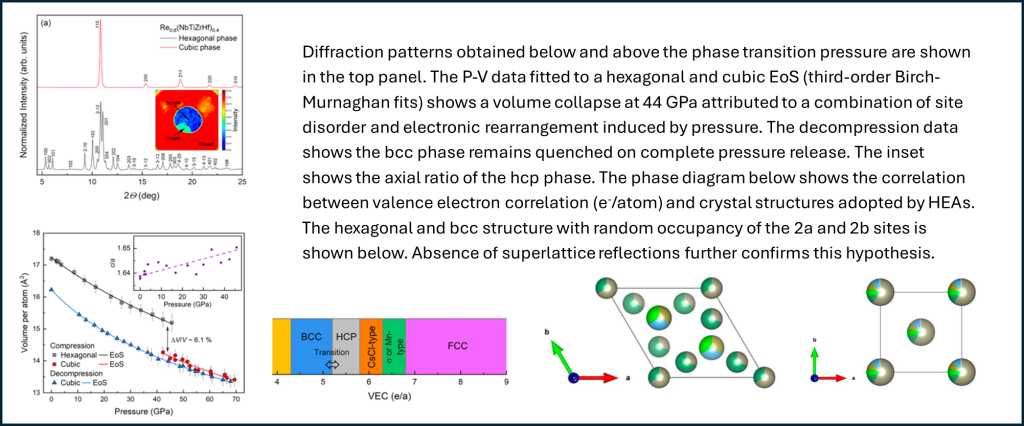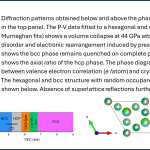Pressure-induced irreversible volume collapse in a high-entropy alloy

High-entropy alloys (HEAs) have attracted significant interest due to their unconventional phase stability, mechanical robustness and superconducting properties. Configurational entropy (that increases with disordered atomic arrangement and lowers the overall free energy) is responsible for the stability of this class of materials and their unique response to applied uniaxial or hydrostatic pressures.
In a first, a research team from the Center for Additively Manufactured Complex Systems under Extremes (CAMCSE), led by the University of Alabama at Birmingham, used diamond anvil cell-based synchrotron x-ray diffraction measurements at HPCAT sector 16-ID-B at APS to report a hexagonal (hcp)-to-body centered cubic (bcc) phase transition in Re0.6(NbTiZrHf)0.4 at high pressures. The team reports on a unique transition in this superconducting HEA, which results in a random site occupancy of the five constituent elements with a ~ 6 % volume collapse. The resultant bcc phase is remarkably stable and remains after pressure release to ambient conditions. The observation of pressure-quenching of bcc phase suggests baro-mechanical pathways exist that can engineer HEAs. The large volume collapse and phase metastability challenges conventional thermodynamic arguments and suggests a complex interplay of coordinated atomic diffusion and valence electron concentration with pressure. Further investigation by the CAMSCE team is planned to asses the impact of shear on the martensitic transition and subsequent stability pressure range of the hexagonal to bcc transition, while also determining the correlated superconductivity behavior from ambient, across the structural phase transition, and upon recovery.


For more, see: Raimundas Sereika, Caleb Knight, Kallol Chakrabarty, Andrew Pope, Dean Smith and Yogesh Vohra, Phys. Rev. Materials 9, 073609 (2025) DOI: https://doi.org/10.1103/zsmk-3vnt

